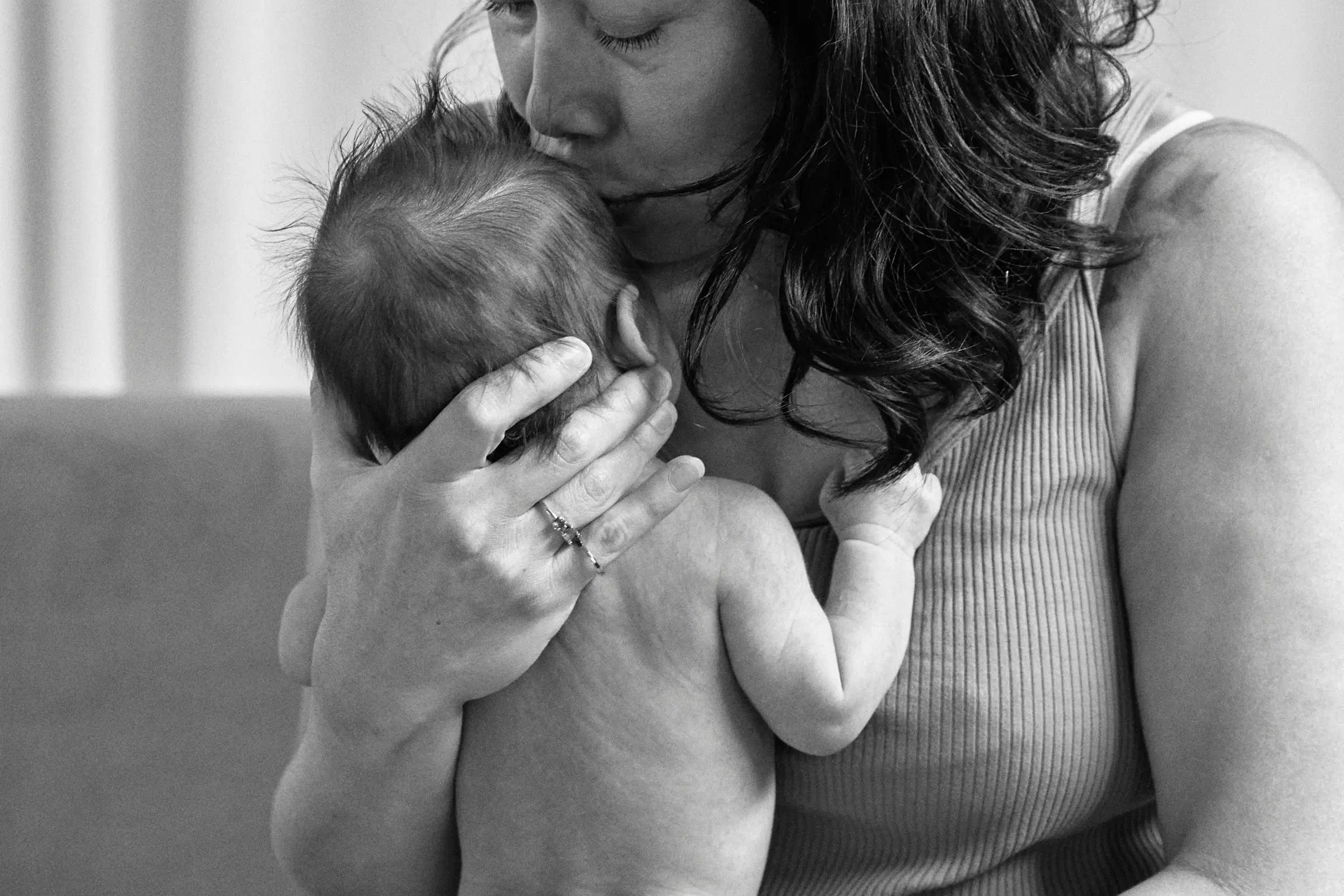FREE GIFT FRIDAY IS HERE... Receive a FREE Nipple Butter with every purchase $50 and over, plus every order enters you in to win a $2,000 getaway.*
Six reasons to enjoy skin-to-skin

Pure Mama recently sat down with one of Australia's most renown midwife & lactation consultants Joelleen Winduss Paye, to learn why skin-to-skin is so important in the first months of baby's life. And not only that, but also why it's beneficial for Mama too.

This topic is often spoken about in antenatal classes, and among friends, but we're here to provide you with some factual evidence, so you can feel empowered to be a self-advocate during even the most unpredicted birthing outcomes.
SKIN-TO-SKIN IS ONE OF THE MOST EFFORTLESS, YET POWERFUL THINGS YOU CAN DO.
If you didn’t get your golden hours due to birth complications or being separated from your newborn, then try to get as much skin-to-skin time as possible as soon as you can. Skin-to-skin is still so powerful beyond those first few moments after birth and can be practiced daily - you simply cannot overdo it. Holding your baby skin-to-skin means your chest is bare and they are only wearing a nappy.
ONE: Temperature + Vital Signs Regulation
Your body acts as a natural incubator, helping regulate your baby's body temperature and keeping them warm, reducing the energy expended by your baby to keep themselves warm.
Skin-to-skin contact stabilises your baby's heart rate, breathing rate, and oxygen levels.
During the hot summer months, holding your baby skin to skin will help to down-regulate your baby’s body temperature if they are hot, as your body can sense this and will act to adjust your baby’s temperature to a comfortable level.
TWO: Improved Breastfeeding Success
Skin-to-skin contact after birth enhances breastfeeding initiation and duration. It stimulates the release of hormones supporting milk production and facilitates your baby's instinctual latching and suckling (Moore et al., 2016). Spending unlimited time with your baby skin-to-skin is a simple thing you can do to support your breastfeeding goals. You can breastfeed skin-to-skin to help enhance your baby’s innate instincts, however, be mindful that they always need to feel warm and cosy so they can stay relaxed, especially before they are latched and drinking. If you are feeling discomfort when breastfeeding, PURE MAMA's Nipple Butter is a great soothing balm to restore cracked or raw nipples to ensure relaxed and restful skin-to-skin.

THREE: Reduced Stress and Crying
Enjoy a calm oasis as skin-to-skin contact reduces stress levels for both you and your baby. Skin-to-skin contact lowers cortisol (stress hormone), increases oxytocin (calming) and decreases infant crying (Feldman et al., 2010). A beautiful thing to try when your baby is crying and unsettled, is placing them skin to skin and then doing some deep breathing, also known as diaphragmatic breathing. This type of breathing helps to calm your nervous system, which will rub off on your baby.
FOUR: Enhanced Brain Development
Skin-to-skin contact contributes to healthy brain development in infants. It's associated with better cognitive outcomes, increased neurobehavioral organisation, and improved self-regulation skills (Moore et al., 2016).
FIVE: Immune System Benefits
Skin-to-skin contact supports the development of your baby's immune system by exposing them to your beneficial skin bacteria. It helps establish a diverse and healthy microbiome (Feldman et al., 2010). Keep this in mind if your baby has been exposed to antibiotics which destroy not only the harmful but the healthy bacteria, as skin-to-skin can help to repair your baby’s gut health.
SIX: Bonding and Attachment
Skin-to-skin contact promotes a strong emotional connection, fostering trust and security between you and your baby (Feldman et al., 2010; Moore et al., 2016). The work of neuroscientist and doula Greer Kirshenbaum shows us that nurturing touch within the first three years of a child’s life promotes lifelong mental wellness. Skin-to-skin is not only beneficial for the baby, but the parents will also benefit from the feel-good chemicals released such as oxytocin (the love hormone), endorphins and dopamine.
JOELLEEN'S TOP TIPS
+ Keep your baby’s nappy and socks on.
+ Place a cosy blanket over your baby.
+ Make sure there are no draughts/cool air in the room.
+ Avoid skin-to-skin when you are drowsy/sleepy or taking strong pain medication.
+ If your baby is waking hungry and upset, feed them a little first and then remove their clothing when they have had a bit to satisfy their hunger.
+ Skin-to-skin doesn’t just need to be done during feeds, let your baby nap on you before and after feeds.

To find out more information about how Joelleen can assist your journey to motherhood visit @jwp.ibclc or visit her website to book a one-on-one appointment.